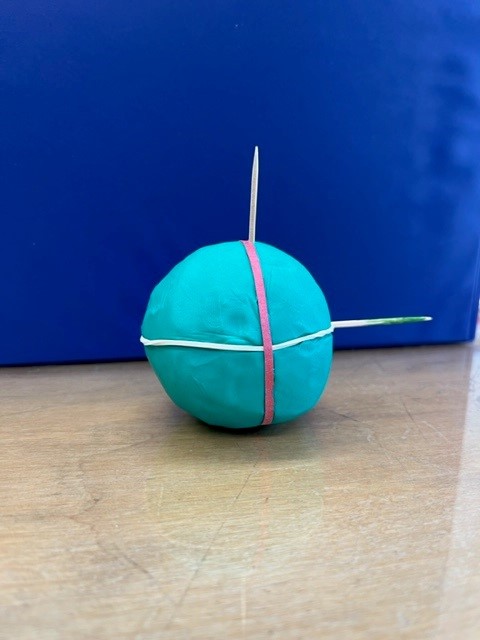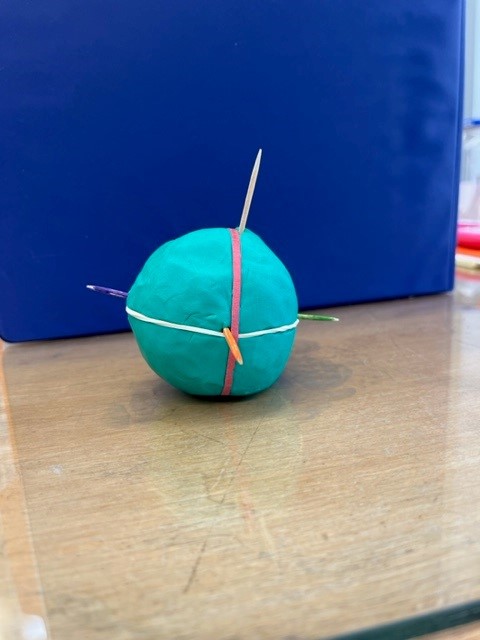Hey Earth, straighten up!
Have you ever wondered what would happen if the Earth lost its tilt? Ask youth how the Earth moves and see what they discover.

Many youth, or adults, might not be aware, but the Earth is not straight up and down. It is tilted. Have you ever wondered what would happen if the Earth’s axis lost its tilt?
The Michigan State University Extension science team’s goal is to increase STEM (science, technology, engineering, and mathematics) literacy across Michigan. One way we increase interest in STEM is to provide information and ideas for engaging youth in the exploration of their world.
Ask youth how the Earth moves and see what they discover. Then ask them what would happen if the Earth straightened up on its axis. A flashlight, ball of clay, toothpicks and markers can help youth explain the movement of the Earth.
Here are the basic concepts with some modeling ideas to get you started.
The Earth rotates on its own axis, resulting in a 24-hour day. The axis is like an imaginary rod from the North to South Pole, straight through the center of the Earth.
-
- Make your ball of clay into the Earth. Draw the equator and prime meridian or use rubber bands. Youth can also draw rough outlines of the continents and name them with real or imaginary names. Or use an inflatable globe!
- Stick a toothpick into the ball of clay, pointing straight into the sky. This would be the North Pole and represent the axis the Earth rotates on.
- Stick a toothpick into the side of the ball of clay, in the equator, so it is parallel to the ground. (See image 1).
- Have one youth hold the flashlight so it is shining on one side of the ball of clay. If the clay was the Earth, what would it represent when the light was pointing at the ball? Sunlight!
- Ask another youth to slowly rotate the ball of clay, keeping the toothpick parallel to the ground. When they have completed one rotation, ask the youth what they just modeled. Help youth make the connection that this is equal to our 24-hour day.

The axis the Earth rotates on is tilted, so we have seasons.
-
- Tip the ball of clay just a little, so the toothpick representing the axis is pointing at a slight angle up. Ask youth what this model represented.
The tilted Earth revolves around the sun, resulting in a 365-day year with seasons.
-
- Add three more toothpicks, one on each side of the ball in the same plane as the first. Color the end of each toothpick a different color to help youth see what is happening more clearly. (See image 2).
- Now place a flashlight in the center of a circle shining on the ball of clay with the toothpicks. The ball should be tilted slightly and about a foot away from the light. Slowly move the ball of clay in a circle around the light, keeping the same distance and orientation, don’t rotate the ball of clay. Turn the light so it remains shining on the ball of clay. When the ball has completed the circle, the light should have shined on all sides of the ball. This interactive image may be helpful. Ask youth what this modeled. Help youth make the connection that is similar to one year and the seasons.
- Draw the addition symbol (+) in the circle. As the balls moves around the circle, stop at each line of the symbol. Ask youth where is the light shining on the ball the brightest (straight line from the flashlight)? Where will the hottest temperatures be if we let the light heat up the ball? What season is the hottest? When would the U.S. (northern Hemisphere) have summer? Winter? Why?

What did youth discover? What did youth think would happen if the Earth no longer tilted on its axis? The PBS Learning Media has an interactive model describing the seasons that can help youth understand how the movement of the Earth results in a 24-hour day, a 365-day year and the seasons.



 Print
Print Email
Email


